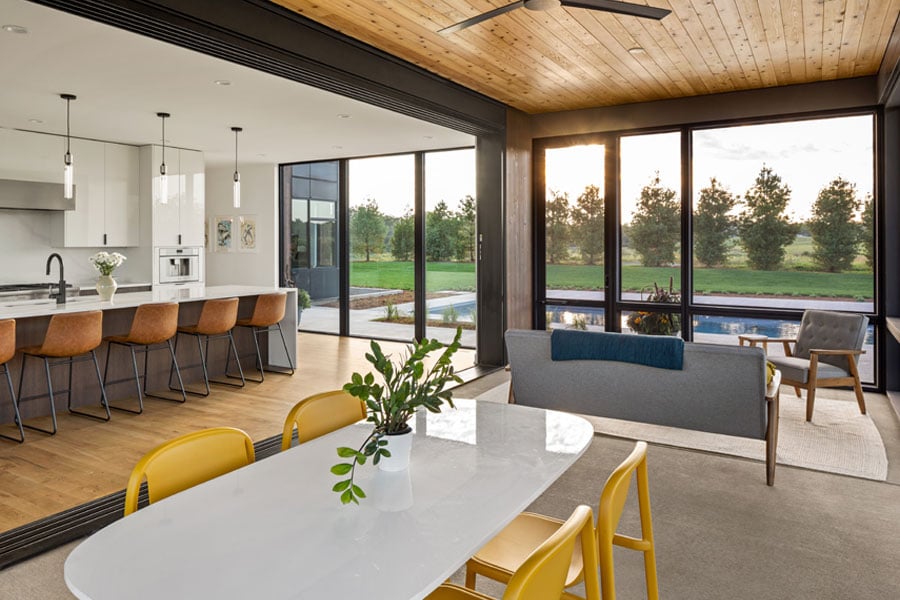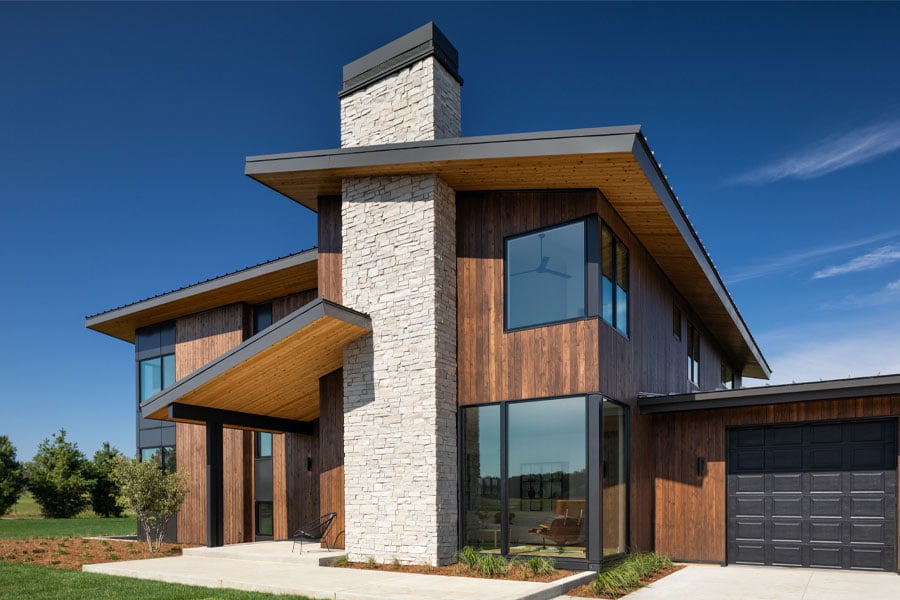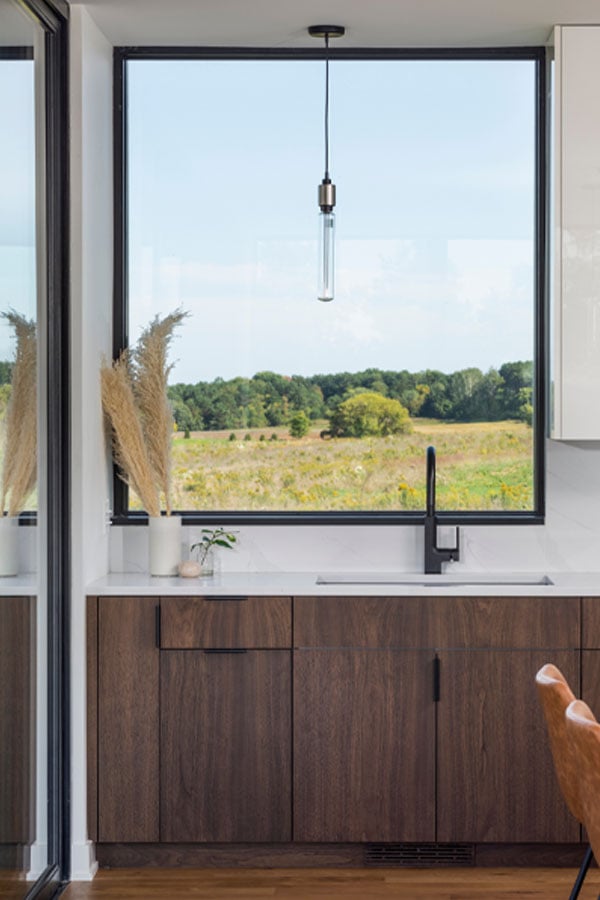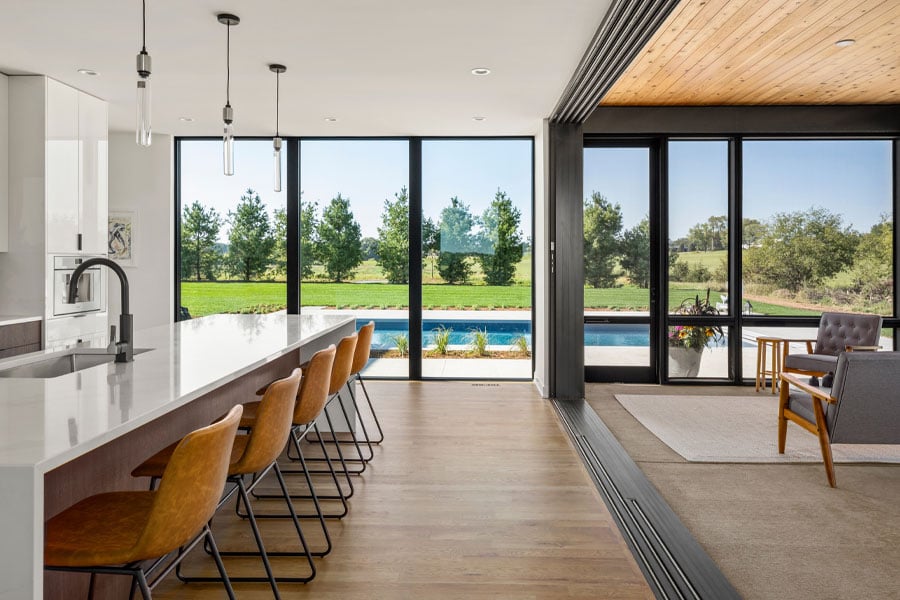Trends
Biophilic design: What is it?

What is biophilic design?
Biophilic design focuses on elements of the natural world — think light, air, water, and more — to make built environments feel more alive. “The goal is to enhance the occupant’s well-being by connecting them with their natural surroundings,” Imhoff said. For example, natural light can improve mood, energy, and even promote sleep.*
To understand how an architect might bring a biophilic design to life in your home, let’s look at Prairie Prospect — a new home designed by Imhoff and her partners at Imprint Architecture & Design LLC.
Placing the home (and everything else) in the best possible spot
As the name implies, this home is on the Minnesota prairie. To ensure the home would make the most of its beautiful surroundings and access to unobstructed light, Imhoff and her partners designed the home to “reach out” with a footprint that spreads in all four directions and windows and doors that maximize views.
Takeaway: One of the ways an architect can bring a biophilic design to life is by positioning the home optimally on its lot.

The Prairie Prospect house is a “hybrid” of design styles with a modern aesthetic and influences from the architecture of the Pacific Northwest but the “way it sits on the land and reaches out” is derived from Prairie-style architecture. (Architecture by Imprint Architecture & Design LLC)
Talk like a pro: Site planning
Studying the site and its surroundings — the landscape and where neighbors’ homes are located — is a preliminary step in an architect’s design process. Using 3D modeling, information provided by a surveyor, and other resources, an architect can plan where best to locate the home, the swimming pool, the driveway, etc. An architectural site plan addresses the topography of the lot as well as the drainage and grading with the goal of enhancing daily life for the homeowner. For example, Prairie Prospect is situated farther back from the road and lower on the site to promote privacy and muffle sound from passing cars.
Creating a layout that connects with the outdoors
Prairie Prospect has a “nice, simple layout,” Imhoff said. On the first floor, there are two larger, open-concept spaces and a few smaller rooms, including an office and TV room. This approach allows for both public areas where everyone can gather and private areas where people can retreat all without creating too many rooms. The result is that most spaces have direct access and connection to the prairie through windows and/or doors.
Takeaway: The right layout can help bring a biophilic design to life by prioritizing direct access to the outdoors.

Talk like a pro: Program
Spatial planning, or the layout of where rooms go, is part of what an architect delivers. More specifically, what an architect delivers is a custom layout designed to accommodate your lifestyle. They figure out layout by defining a “program” or establishing things like the number of bedrooms required, space needed to accommodate hobbies, etc. In this case, the family loves to cook so a large portion of their first floor is devoted to the kitchen and its adjoining hang-out space on the porch.
Bringing in natural light where it really counts
"People want to be in light-filled spaces. They also want to feel like they’re connected to the outside,” Imhoff said. To that end, the Prairie Prospect house features floor-to-ceiling E-series windows and two MultiGlide™ Doors. These openings are prominent features in the kitchen and family room, spaces where the family spends most of their “waking and working hours.” To ensure good light throughout the day, these rooms have windows and doors on at least two walls.
Takeaway: A design that prioritizes windows and doors in the most lived-in spaces helps maximize the benefits of a biophilic design, like natural light and beautiful views.

Talk like a pro: Daylighting
This means integrating windows into a building’s design optimally, i.e., planning windows so they light the interior space, promote energy efficiency, and create a welcoming environment. This is done through window placement and orientation. For example, the primary bedroom and porch are both north facing, which keeps these spaces cooler and darker creating ideal environments for sleeping and cooling off on a hot summer’s day.
Want to create a biophilic design? Hire an architect!
An architect’s job is to “design and create spaces that enhance a client’s well-being and enjoyment of that space” said Imhoff. The current popularity of biophilic design reflects our rising awareness about the importance of natural light, connecting with nature, and other healthy home concepts. So if you want to create a home with a biophilic design, hiring an architect is your best bet.
Up next: Learn more about creating your own healthy home or explore another healthy home project.

